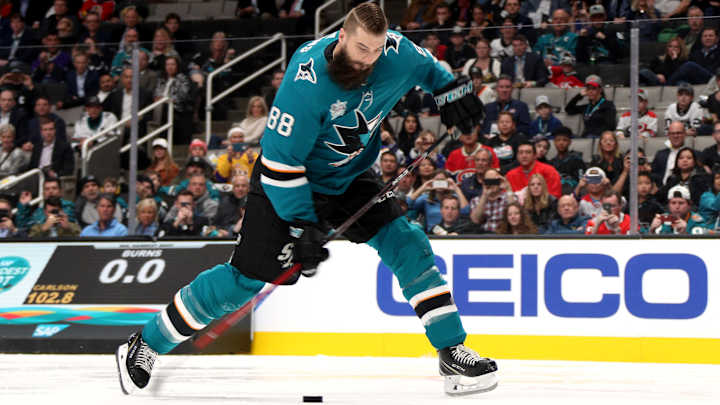Puck and Player Tracking Coming to NHL Next Season

Puck and player tracking is coming to the NHL next season. A sneak preview is coming up this weekend, too.
Commissioner Gary Bettman announced the long-expected news Friday during All-Star Weekend in San Jose, California, calling it a ''breakthrough that is years in the making.'' The league is partnering with German company Jogmo World Corp. to put microchips on player jerseys and inside game pucks. Real-time data will be gathered by antennas in all 31 NHL arenas.
The NHL joins the NFL as the two major North American professional sports leagues with wearable tracking technology. The NBA and Major League Baseball use sophisticated systems that can include radar and cameras.
''Being on the forefront of innovation is good for our game and most especially for our fans,'' Bettman said. ''With the speed and complexity of hockey, it makes for an unparalleled on-ice product, but at the same time it also presents an incredible challenge. So as a league we have made significant investment to create new technology that quite literally did not exist.''
Kendall Coyne Becomes First Woman to Compete in NHL All-Star Skills Competition
Long after the glowing puck of FoxTrax a generation ago, the NHL began its work on puck and player tracking in earnest in 2013. Tests of various systems were done at All-Star games, the 2016 World Cup of Hockey and two regular-season games earlier this month in Las Vegas.
While the glowing puck isn't coming back, this All-Star Weekend is another test. NBC Sports in the United States and Rogers Sportsnet in Canada will be showcasing tracking data with NBC featuring it as part of a digital-only broadcast of the 3-on-3 tournament Saturday night.
Players have agreed to the tracking, but the NHL is not yet committing to a firm start date because officials say testing is ongoing with the potential for changes after feedback from players, teams and broadcasters. But the league is confident in the accuracy of the radio frequency-based system and its application for 1,271 regular-season games and the playoffs.
''This will continue to evolve and be monitored and tested and perfected over the course of the rest of this season and parts of next season,'' NHL chief revenue officer Keith Wachtel said. ''But this is our opportunity to say that we are far enough along where the commissioner is comfortable with the data and our broadcasters are comfortable and the NHLPA is comfortable that we can go ahead and unleash this, which we're obviously excited about.''
The six-year effort included what NHL senior vice president of business development David Lehanski called ''unforeseen'' challenges, primarily with how to make the puck.
''A lot of testing (was done) on the performance of the puck both with regard to its durability but also its playability,'' Lehanski said. ''The puck itself is really something unlike anything else ... any other sport has really had to contend with.''
Researchers and engineers at the Fraunhofer Institute and Jogmo believe they have reached to the point where players don't notice the microchips on their shoulder pads and can't tell the difference between the new ''smart puck'' and the frozen rubber that has been part of hockey for more than a century.
''It's an active puck, so it needs to be activated before it goes on the ice and deactivated after that,'' Jogmo founder and CEO Martin Bachmayer said. ''It's kind of a different handling for the officials and for the people in the box. ... That's the kind of stuff we try to figure out in the next couple of months before the season starts: how to really make this right.''
